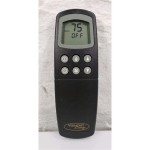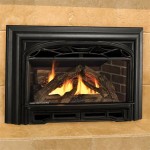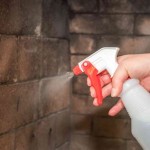Firebrick Gas Inserts For Fireplaces: Enhancing Efficiency and Aesthetics
Firebrick gas inserts represent a significant upgrade for existing fireplaces, offering a blend of efficiency, convenience, and aesthetic appeal. These inserts are designed to be placed within an existing masonry or prefabricated fireplace, transforming a potentially inefficient wood-burning fireplace into a source of supplemental heat powered by natural gas or propane. The integration of firebrick within these inserts plays a crucial role in their performance and longevity.
The primary function of a firebrick gas insert is to provide controlled and efficient heating. Unlike traditional open fireplaces, which often lose a significant amount of heat up the chimney, gas inserts are closed combustion systems. This means that they draw combustion air from outside the house and vent exhaust gases directly through a dedicated flue. This design minimizes heat loss and prevents drafts, resulting in a more comfortable and energy-efficient heating solution.
Firebrick, a refractory ceramic material, is a key component in the construction of many gas inserts. This material is specifically formulated to withstand extremely high temperatures without degrading or cracking. Its ability to retain and radiate heat makes it ideal for lining the firebox of a gas insert, enhancing its overall heating performance.
Key Advantages of Firebrick Gas Inserts
One of the most compelling reasons to consider a firebrick gas insert is the improved energy efficiency compared to traditional open fireplaces. Open fireplaces are notoriously inefficient, with a significant portion of the heat generated escaping up the chimney. Gas inserts, on the other hand, are designed to maximize heat output and minimize heat loss. The firebrick lining helps to absorb heat and radiate it back into the room, contributing to a more consistent and comfortable temperature. This enhanced efficiency translates into lower heating bills and a reduced environmental impact.
Gas fireplace inserts also offer a high degree of control over the heat output. Most models come equipped with adjustable flame settings, allowing users to easily control the amount of heat produced. This level of control is not possible with traditional wood-burning fireplaces, where the heat output is dependent on the amount and type of wood being burned. This feature allows for greater comfort and convenience, allowing users to maintain a consistent temperature throughout the day and night.
Beyond functionality, firebrick gas inserts enhance the aesthetic appeal of a fireplace. Many models are designed with realistic flame patterns and ember beds, mimicking the look and feel of a traditional wood-burning fire. The firebrick lining itself can contribute to the overall aesthetics, with various textures and colors available to complement the décor of the room. Furthermore, the clean-burning nature of gas eliminates the need for wood storage and reduces the mess associated with ash and soot, creating a cleaner and more visually appealing fireplace experience.
The Role of Firebrick in Heat Retention and Distribution
Firebrick's primary role in a gas insert is to act as a thermal mass, absorbing heat from the gas flames and radiating it back into the room. This process is significantly more efficient than simply relying on the direct heat from the flames. The firebrick helps to distribute the heat more evenly and maintain a consistent temperature, even after the gas flame cycles on and off. This is particularly important in larger rooms, where it can be challenging to maintain a comfortable temperature with a less efficient heating source.
The specific type of firebrick used in a gas insert can also affect its performance. Different formulations of firebrick have varying levels of heat resistance and thermal conductivity. Inserts designed for higher heat output may utilize firebrick with a higher alumina content, which provides greater resistance to extreme temperatures. The thickness and density of the firebrick also play a role in its heat retention capabilities. Thicker, denser firebrick will generally retain more heat and provide a more consistent heating experience.
The placement of the firebrick within the insert is also carefully considered. The firebrick is typically arranged to maximize its exposure to the flames and to optimize the radiation of heat into the room. Some inserts may feature strategically placed firebrick baffles or deflectors to further enhance heat distribution. The overall design is aimed at ensuring that the firebrick effectively captures and distributes the heat generated by the gas flames, maximizing the efficiency and comfort of the insert.
Installation and Maintenance Considerations
The installation of a firebrick gas insert requires careful planning and adherence to local building codes. It is generally recommended that installation be performed by a qualified professional to ensure that the insert is properly connected to gas and ventilation systems. Improper installation can result in safety hazards, such as gas leaks or carbon monoxide poisoning.
The installation process typically involves preparing the existing fireplace opening, connecting the gas line, and installing the vent pipe. The vent pipe must be properly sized and installed to ensure that exhaust gases are safely vented outside the home. In some cases, it may be necessary to reline the existing chimney to meet current safety standards. The specific requirements for installation will vary depending on the make and model of the gas insert and the local building codes.
Maintenance of a firebrick gas insert is relatively straightforward. Regular cleaning is essential to ensure optimal performance and longevity. The glass door should be cleaned periodically to remove soot and debris. The firebrick lining should also be inspected for cracks or damage. While firebrick is durable, it can eventually degrade over time, particularly with prolonged exposure to high temperatures. If cracks or damage are detected, the firebrick should be replaced to maintain the efficiency and safety of the insert.
In addition to cleaning and inspection, it is also important to schedule regular professional servicing of the gas insert. A qualified technician can inspect the gas lines, vent system, and other components to ensure that they are functioning properly. This preventative maintenance can help to identify and address potential problems before they become serious, extending the lifespan of the insert and ensuring its continued safe and efficient operation.
Aesthetics and Design Options
Firebrick gas inserts are available in a wide range of styles and designs to complement various home décor. The aesthetic appeal of the insert is often a significant factor in the selection process. Manufacturers offer a variety of options for the firebox lining, flame patterns, and exterior finishes.
The firebrick lining itself can be customized with different textures, colors, and patterns. Some inserts feature a traditional brick pattern, while others offer a more contemporary look with smooth or textured surfaces. The color of the firebrick can also be chosen to complement the surrounding décor. Options range from traditional red brick to more neutral tones such as beige or gray.
The flame pattern is another important aesthetic consideration. Some inserts feature realistic dancing flames that mimic the look of a wood-burning fire. Others offer a more modern, linear flame pattern. The height and intensity of the flames can often be adjusted to create the desired ambiance. Many gas inserts also include an ember bed, which adds to the realism of the fire.
The exterior finish of the gas insert can also be customized to match the surrounding décor. Options include painted metal, cast iron, and stainless steel. The finish can be chosen to complement the style of the fireplace surround and the overall design of the room. Some inserts also feature decorative trim or accents that further enhance their aesthetic appeal.

Qfi30 Firebrick Ift Fireside Home Solutions

Heat Glo Escape Firebrick Gas Fireplace Insert Advanced Chimney Systems

Heat Glo Escape I30 Firebrick Gas Inserton Display In Our Portland Fireplace

Bl42 Refractory Brick Liner Kit Direct Vent Gas Fireplaces

Heat Glo Escape I35 Firebrick Gas Insert Portland Fireplace

Quadra Fire Gas Inserts Copycat Hearth And Home

Heat N Glo Escape Gas Firebrick Insert Newtown Fireplace

Heat Glo Gas Insert Escape Firebrick The Fireplace Club

Escape Gas Firebrick Insert The Stove Place

Heat Glo Gas Insert Escape Firebrick The Fireplace Club








